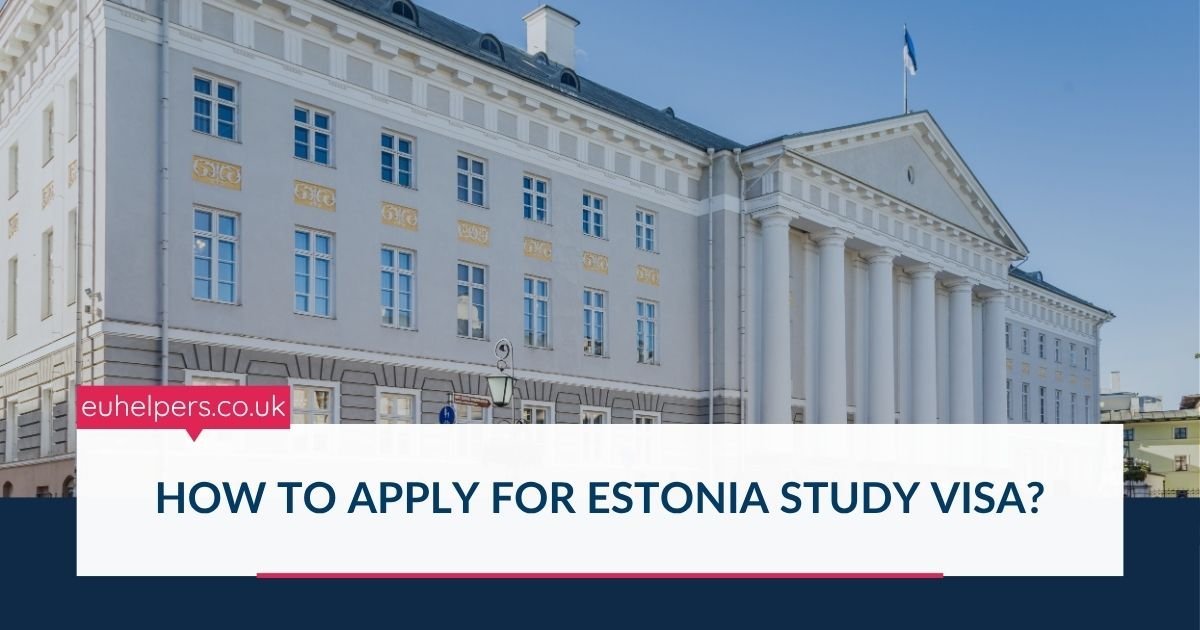Estonia, a forward-thinking nation with a growing international education sector, is home to many top-ranking universities that offer a wide range of English-taught programs. For non-EU citizens planning to study in Estonia, obtaining a D-visa (long-stay visa) and eventually a temporary residence permit for study is essential.
Step 1: Secure Admission to an Estonian University
Your first step is to apply and gain admission to a recognized educational institution in Estonia.
Research and Apply
-
Explore programs offered by Estonian universities that align with your academic goals.
-
Review admission criteria carefully; requirements may include:
-
Academic transcripts
-
Proof of English language proficiency (e.g., IELTS, TOEFL)
-
A motivation letter or an interview
-
-
Once accepted, you’ll receive an official offer letter and, in most cases, a receipt of application fee payment.
Step 2: Apply for a D-Visa (Long-Stay Visa for Study)
After admission, non-EU students must apply for a D-visa to enter Estonia. This is done through the nearest Estonian embassy or consulate.
Contact the Embassy
-
Find the Estonian embassy or consulate in your home country.
-
If Estonia doesn’t have a diplomatic mission in your country, locate the nearest one that represents Estonian interests.
Schedule an Appointment
-
Book an appointment via the embassy’s website or through an authorized visa center like VFS Global.
Fill Out the Application Form
-
Complete the D-visa application form, ensuring that all information is accurate and complete.
Prepare Required Documents
Gather and organize the following mandatory documents:
-
A valid passport (issued within the last 10 years, with at least two blank pages, and valid for at least three months beyond the visa expiration date)
-
A recent passport photo
-
The signed D-visa application form
-
Official university admission documents (offer letter, payment confirmation)
-
Proof of sufficient financial means (e.g., recent bank statements)
-
Health insurance valid in Estonia and the Schengen area with a minimum coverage of €30,000
-
Proof of accommodation (e.g., housing contract or dormitory confirmation)
-
Proof of payment of the visa fee (typically around €100)
-
Any other documents required by the specific embassy or consulate
Attend the Visa Interview
-
Visit the embassy or consulate on the scheduled date.
-
Bring all required documents and be prepared to answer questions about your study plans and background.
Biometric Data Collection
-
You may be asked to provide biometric data, such as fingerprints, during your appointment.
Visa Processing
-
The typical processing time for a D-visa is up to 15 days, though this may vary depending on your location and individual circumstances.
Receive Your Visa
-
Once approved, you will receive your D-visa, which allows you to travel to Estonia for study purposes.
Step 3: Apply for a Temporary Residence Permit in Estonia
If your study program in Estonia exceeds one year, you must apply for a temporary residence permit for study after arriving in the country.
Visit the Estonian Police and Border Guard Board (PBGB)
-
Schedule an appointment at a local PBGB service office.
-
Submit the required documents for the residence permit application. These may include:
-
A valid passport
-
Proof of university enrollment
-
Proof of financial means and accommodation
-
Health insurance documents
-
Visa and entry stamps
-
Additional forms provided by PBGB
-
Additional Interview (if required)
-
You may be called for an in-person interview as part of the residence permit process.
Register Your Residence
-
Once your residence permit is approved, you are required to register your place of residence with the Estonian Population Register.
Estonia offers a streamlined and transparent visa process for international students. From securing university admission to receiving a long-stay D-visa and applying for a residence permit upon arrival, each step is well-structured. Always check the latest requirements from the Estonian embassy or consulate in your country, as procedures and document lists may vary slightly.
With preparation and attention to detail, you’ll be well on your way to starting your academic journey in one of Europe’s most digitally advanced and student-friendly countries.

